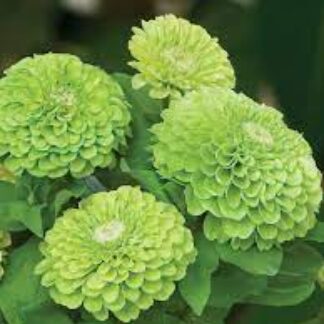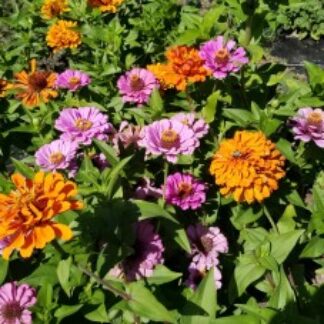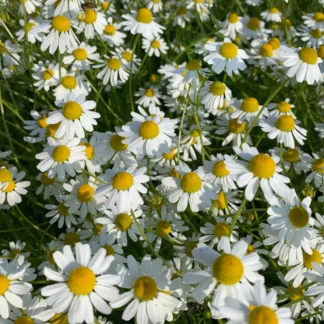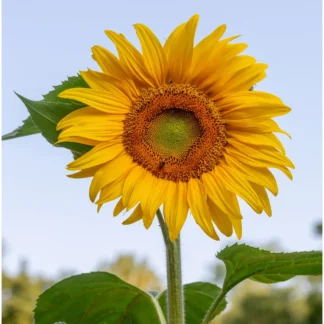Description
| Light Requirement Full Sun |
Mature Spread 36 – 40 inches |
| Mature Height 108 – 144 inches |
Growth Habit Erect |
How To Plant
Planting in the Garden:
- Select a location in full sun with good rich moist organic soil.
- Prepare the bed by turning the soil under to a depth of 8 inches. Level with a rake to remove clumps of grass and stones.
- Most plants respond well to soils amended with organic matter. Compost is a wonderful form of organic matter with a good balance of nutrients and an ideal pH level, it can be added to your planting area at any time. If compost is not available, top dress the soil after planting with 1-2 inches of organic mulch, which will begin to breakdown into compost. After the growing season, a soil test will indicate what soil amendments are needed for the following season.
- Dig a hole for each plant large enough to amply accommodate the root ball.
- Place the top of the root ball even with the level of the surrounding soil. Fill with soil to the top of the root ball. Press soil down firmly with your hand leaving a slight depression around the plant to hold water.
- Water thoroughly, so that a puddle forms in the saucer you have created. This settles the plants in, drives out air pockets and results in good root-to-soil contact.
- Use the plant tag as a location marker.
How To Care
- Keep weeds under control during the growing season. Weeds compete with plants for water, space and nutrients, so control them by either cultivating often or use a mulch to prevent their seeds from germinating.
- Mulches also help retain soil moisture and maintain even soil temperatures. This is especially important for tomatoes as their roots may be easily damaged when weeding, and this can lead to blossom end rot.
- Keep soil evenly moist but not wet.
- Once established sunflowers can tolerate drought.
- No fertilizer is needed unless the soil is poor. Do not over fertilize.
- Monitor for pests and diseases.
- Some varieties only produce one bloom so once the bloom is spent, the plant may be removed.
- Remove plants after they are killed by frost in fall to avoid disease issues the following year.
Tips
- Edible sunflowers will mature in about 3 months or more after sowing. To harvest the seeds, cut the heads off after the stalks are quite dry but before fall or winter rains come. Check the flower heads for maturity to see if the florets in the center of the flower disk have shriveled and the back of the flower head is turning yellow, or the head is starting to droop. Cut flower-heads with a foot of the stalk attached. Hang heads in a warm, dry, well-ventilated place so the seeds may fully ripen and dry. Cheesecloth, netting or a paper bag with holes punched in for ventilation should be placed over the head to protect the seeds and to collect those that may drop from drying.
- Shorter varieties may be grown in containers. Be sure to use a commercial potting mix.
- Pollenless varieties make terrific cut flowers.
Common Pests and Diseases
Common Pests:
- Aphids: Greenish, red, black or peach colored sucking insects can spread disease as they feed on the undersides of leaves. They leave a sticky residue on foliage that attracts ants. TBK Nursery Recommends: Introduce or attract natural predators into your garden such as lady beetles and wasps who feed on aphids. You can also wash them off with a strong spray, or use an insecticidal soap.
- Cutworms: These insects cut off the seedlings at the soil level. TBK Nursery Recommends: Place a paper cup collar (use a coffee cut with the bottom cut out) around the base of the plant. They are usually mostly a problem with young seedlings. You can also control by handpicking and controlling weeds, where they lay their eggs.
- Flea Beetles: These small hopping beetles feed on plant foliage and may spread diseases.TBK Nursery Recommends: Rotate crops with plants in a different plant family. Use floating row covers to prevent damage to young foliage.
- Sunflower Moth: A small gray sunflower moth sometimes lays its eggs in developing sunflower blossoms. Its larvae are greenish-yellow with 5 brown stripes down their backs. They feed in the flower and destroy seeds, creating a mass of webbing and debris. TBK Nursery Recommends: Hand pick the worms from the plants and drop them into a plastic bag for the trash.
- Sunflower Stem Weevil: Adults are dark brown with light spot about 1/8 inch long. Larvae are pale. They bore into the stems and the foliage turns yellow and wilts. Plants fall over and die. TBK Nursery Recommends: Delay planting so beetles will emerge and die before laying eggs. Remove and dispose of debris at the end of the season.
Common Diseases:
- Alternaria Leaf Spot: Small, round reddish brown spots with white to gray centers form on the upper surface of the leaves and along the midrib. The lesions may encircle the stems and cause wilt. This disease is worse in warm, wet or very humid weather. TBK Nursery Recommends: Avoid getting water on the foliage. Remove infected plant parts and do not work around wet plants. Provide plenty of air circulation.
- Downy Mildew: This fungus causes whitish gray patches on the undersides and eventually both sides of the leaves. TBK Nursery Recommends: Rotate crops with plants in a different family. Avoid overhead watering. Provide adequate air circulation, do not overcrowd plants. Do not work around plants when they are wet.
- Powdery Mildew: This fungus disease occurs on the top of the leaves in humid weather conditions. The leaves appear to have a whitish or greyish surface and may curl. TBK Nursery Recommends: Avoid powdery mildew by providing good air circulation for the plants by good spacing and pruning.
- Rust: A number of fungus diseases that rust colored spots on foliage, stalks and husks. TBK Nursery Recommends: Plant resistant varieties. Practice crop rotation. Remove infected plants.





